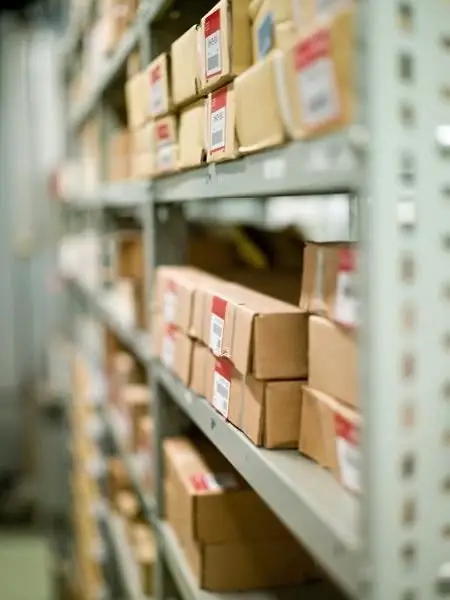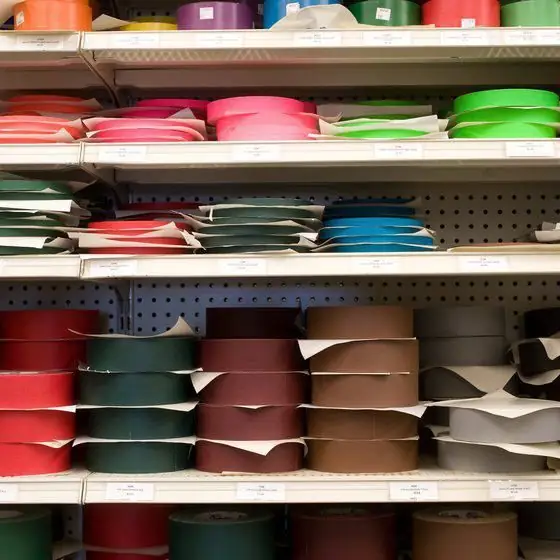2026 Author: Howard Calhoun | [email protected]. Last modified: 2025-01-24 13:10:35
Accounting for goods and materials in the warehouse plays an essential role in the economic accounting of the enterprise. The reliability of data periodically transmitted to the accounting department in the form of reports and objectivity in assessing the profitability of the enterprise as a whole depend on its organization.

There are several options for organizing inventory accounting. These are varietal as well as batch methods. The algorithm for issuing the relevant documentation depends on the choice of one or another option. In any case, accounting for goods and materials is carried out directly in physical terms. The basis is incoming or outgoing documents. All of them must be handed over to the accountant within a strict deadline.
Variety accounting of goods and materials
Assumes that all goods in the warehouse are stored under certain items (or grades). Any new entry joins the existing ones. Responsible persons reflect all changes in specialized cards or journals.
Batch inventory accounting
Its difference from the first option is that any new arrival of objects is stored separately. Moreover, a special card is opened for the newly received batch.
Accountinginventory accounting
There are two main options. Both of them are based on such a document as a turnover sheet. In the first case, cards are created for each individual item of goods, which allow for quantitative and total accounting. They reflect the receipt and consumption of materials on the basis of primary accounting documents, and also calculate the turnover for a certain period (month) and display the balances at the beginning of a new one. Then, in accordance with the available cards, turnover sheets are formed separately for each warehouse.

This is done monthly. In addition, a reconciliation of the data reflected in the cards provided by the warehouses and accounting departments is carried out. The second option involves grouping all documents according to the available item numbers, which serve as the basis for calculating monthly totals separately for receipts and expenditures. All information is entered into the turnover sheet.
Classification
It should be noted that all production stocks can be divided into basic and auxiliary materials, raw materials, purchased semi-finished products, as well as returnable waste. Each of the above groups has its own subcategories and is listed in the nomenclature with a specific code. The first 3 digits in it define the account number, the 4th and 5th digits are the product group, the rest reflect specific characteristics.

Evaluation of goods and materials
This procedure, however, as well as the reflection of certain values on synthetic accounts, can be performedboth in cost and price. The second option is the most common. Accounting for goods and materials, accounting postings allow you to calculate the total cost of each batch. To do this, you must set the appropriate analytical marks in the program.
Valuable write-off methods
Write-off can be carried out at average cost or by FIFO, LIFO methods. The first option is the most common in practice. Inventory and materials are written off during the reporting period at accounting prices, and at the end of the month, the shares of existing deviations from the actual cost are entered. The FIFO method is characterized by writing off all goods at the price of the 1st batch, then at the 2nd and so on. The last option is the opposite of the previous one. All materials are written off in reverse order until the total consumption of valuables is formed.
Recommended:
Accounting documents are The concept, rules for registration and storage of accounting documents. 402-FZ "On Accounting". Article 9. Primary accounting documents

Proper execution of accounting documentation is very important for the process of generating accounting information and determining tax liabilities. Therefore, it is necessary to treat documents with special care. Specialists of accounting services, representatives of small businesses who keep independent records should know the main requirements for the creation, design, movement, storage of papers
Accounting for working hours in the summary accounting. Summarized accounting of the working time of drivers with a shift schedule. Overtime hours with summarized accounting of wor

The Labor Code provides for work with a summarized accounting of working hours. In practice, not all enterprises use this assumption. As a rule, this is due to certain difficulties in the calculation
Re-sorting of goods is a simultaneous shortage of one item of goods and a surplus of another. Accounting for sorting during inventory

When conducting an inventory at trading enterprises, shortages, surpluses, and regrading are often revealed. With the first two phenomena, everything is more or less clear: there is either a lot of this or that product, or a little. Re-sorting of goods is a rather unpleasant and difficult situation
Materials released to production (posting). Accounting for the disposal of materials. accounting entries

Most of all existing enterprises can not do without inventories used to produce products, provide services or perform work. Since inventories are the most liquid assets of the enterprise, their correct accounting is extremely important
What you need to work in a taxi: necessary documents and requirements, regulations and legal aspects. Feedback and advice from taxi drivers, customers and dispatchers

According to many passengers, the job of a taxi driver is the easiest. You sit, listen to pleasant music and drive back and forth. And they give you money for it. But this is only the outer side of the coin. The reverse is much less rosy. We will talk about it in this article. And we will also highlight what you need to work in a taxi

